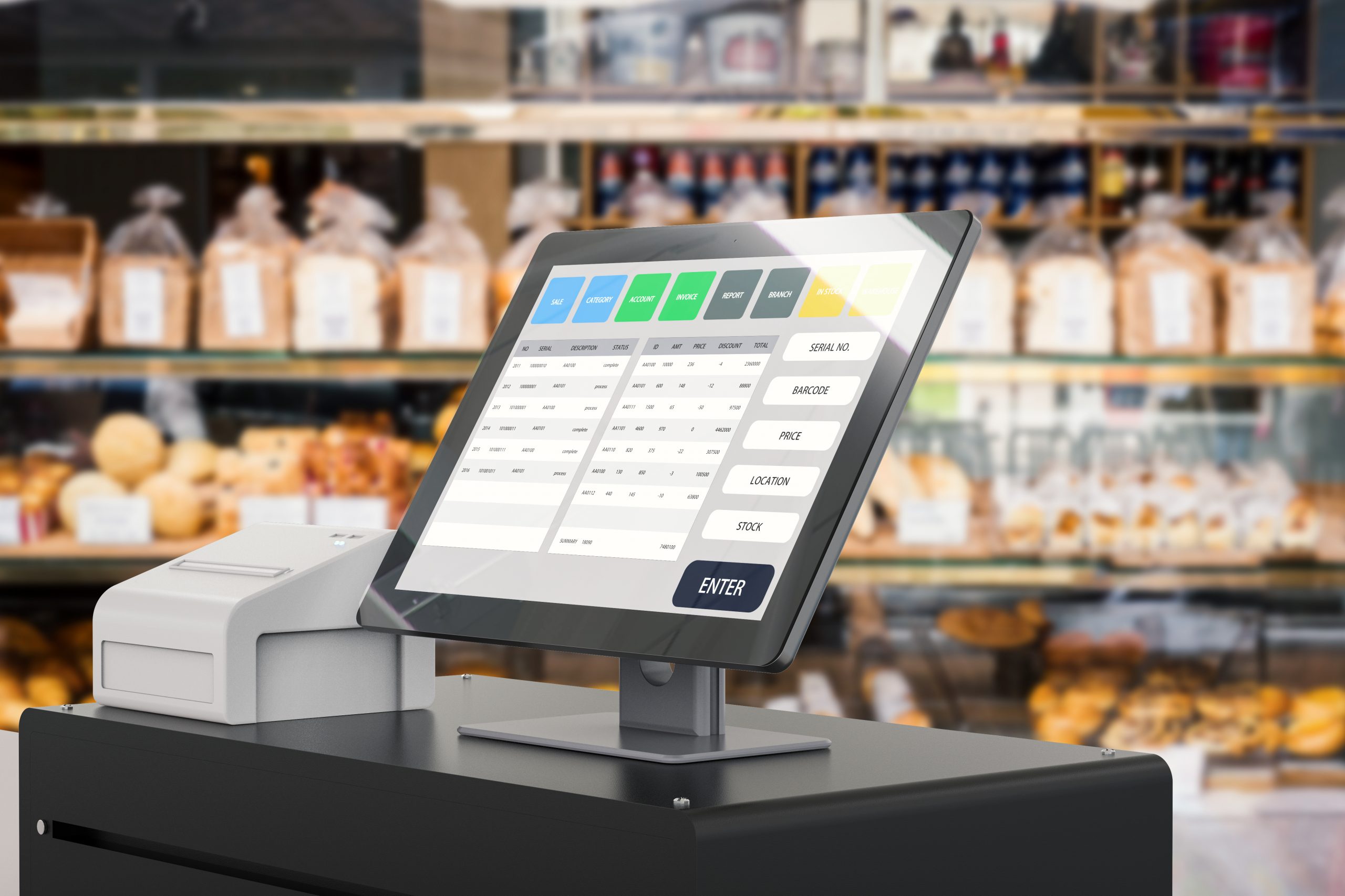
At the point of sale, the merchant indicates the options to make payment, calculates the amount owed by the customer, prepares an invoice, e.g., a cash register printout, and shows that amount. POS is not a unified solution. Rather, POS is divided into various types depending on verticals’ company size. Heavy industry manufacturing has other needs than a single shoe store; restaurants have different needs because it has a physical location. A store that provides delivery options has another business structure, and therefore their operations management system has to be different. When looking for a POS, one should take into consideration both software and Hardware. And both of these components are very important because the income level from each division depends on their quality work. Sometimes, an excellent hardware quality is offset by a bad software. Types of POS systems: – POS Apps; – Mobile POS systems; – Touch screen POS systems; – Cloud POS systems; – Open Source POS Systems; – Multichannel POS Systems; – Self-Service Kiosk POS Systems.
POS Apps
 POS applications are cloud-based software that can be uploaded from any compatible mobile device and get access to the stored information. Some applications are available on multiple platforms, while others are only available for Android or iOS. There are also POS applications designed for iPad only.
POS applications are cloud-based software that can be uploaded from any compatible mobile device and get access to the stored information. Some applications are available on multiple platforms, while others are only available for Android or iOS. There are also POS applications designed for iPad only.
See what POS are worth considering in 2022
The great thing about having a POS app is that it’s easily accessible and easy to use. It can even include GPS tracking capabilities if your system provider offers them. If a POS application doesn’t provide an easy way to upload inventory data like physical receipts, another option is usually available. Barcode scanners attached to your tablet will scan those documents quickly and accurately and upload them to your POS application. First of all, you need to understand what each provider offers and read reviews of their services to find the ones that work best with companies like yours.
Mobile POS systems
Smartphones and tablet POS services can process payments. As well, some inventory and customer information is handled by them. Retail merchants or restaurants, in most cases, need a mobile POS (or mPOS) system. It has more options than an app and is flexible to process transactions from any location. Also, is this platform a perfect solution for merchants who need to treat online and in-store transactions? Mobile POS systems are becoming more and more of a necessity in today’s businesses. The rise of these technologies proves how many companies seek better performance. Here’s what you should know before choosing one:
 Mobile POS systems are compatible with iOS, Android, and Windows devices;
Mobile POS systems are compatible with iOS, Android, and Windows devices; - Integration with different software.
- Free plan up to $3k transaction volume;
- Additional POS software packages;
- Offline mode;
- Technical support service by phone/chat/email/web ticketing;
- Customization of receipts design, etc.
Touch screen POS systems
Different devices support a touch-screen POS system, including tablets, smartphones, and computers. There are touch-screen POS systems that come with poor touch-screen hardware. The intuitive touch-screen software conception makes it simple to use for customers and employees.  Even if you have been working with traditional POS systems for some time, you will notice that a touch screen is much more convenient to operate than those old bulky machines. While cash registers certainly serve an important role in businesses today, they are often challenging to run. A modern POS system can save your business time by simplifying these tasks and increasing overall efficiency. Touch screen POS systems eliminate paper money and checks, so there is no need for cash drawers or check validators.
Even if you have been working with traditional POS systems for some time, you will notice that a touch screen is much more convenient to operate than those old bulky machines. While cash registers certainly serve an important role in businesses today, they are often challenging to run. A modern POS system can save your business time by simplifying these tasks and increasing overall efficiency. Touch screen POS systems eliminate paper money and checks, so there is no need for cash drawers or check validators.
Open source POS
Open-source software can be used for learning and allows capable end-users to tailor it to their own needs, and it can be developed collaboratively. Open-source software development can bring economic dividends to your company. Open source POS requires resources to operate. Moreover, over time it claims more maintenance and updates. For these reasons, open source POS systems are suitable for serious enterprises or technically advanced small enterprises. Large enterprises have more individual and unique needs as well as more investments. Open-source POS systems may be an attractive option for businesses with technical and coding skills, as they are often free or inexpensive investments.
Cloud POS systems
Mobile POS systems aren’t as technologically sophisticated even if you’re new to running a business; plus, there can be hidden expenses associated with upgrades that fall outside of initial costs. Cloud POS Systems require fewer IT working hours and much lower investment costs than most traditional POS software options. It makes them better suited for retail SMB’s who prefer streamlined operations or don’t have much capital available.
Transactions are registered by cloud-based software in real-time, so the access to data is fast and available from anywhere with an internet connection. The data will sync to a centralized database giving you a consistent view of your business – a practical option for small businesses with multiple POS systems or even locations. A real-time inventory update is a default feature for most cloud POS systems that are essential for various stores and retail merchants to track product levels.
 Multichannel POS Systems
Multichannel POS Systems
Businesses with online and in-store sales need to integrate and manage business data from one local point. Multi-Channel POS systems are ideal for such entrepreneurs. Product-based businesses can sync inventory levels across channels to avoid goods deficits. Lines between online and offline commerce intertwine and maintain precise business data.
Self-Service Kiosk POS Systems
 Kiosk POS self-service system reduces queues and waiting times. They appeared in self-service stores in retail, which we used to see in grocery stores. Consumers can scan their goods and make their payments, and the time to buy is reduced and gives buyers more control. This type of POS is critical now, during COVID-19, to limit people’s contact. POS self-service systems are designed to meet clients’ needs – they do not need the assistance of an employee to place an order and make the payment, and reduce the waiting time in queues.
Kiosk POS self-service system reduces queues and waiting times. They appeared in self-service stores in retail, which we used to see in grocery stores. Consumers can scan their goods and make their payments, and the time to buy is reduced and gives buyers more control. This type of POS is critical now, during COVID-19, to limit people’s contact. POS self-service systems are designed to meet clients’ needs – they do not need the assistance of an employee to place an order and make the payment, and reduce the waiting time in queues.
Conclusion
There are different types of POS terminals available out there. Using a POS system entails many benefits, including overall cost reduction and access from any device anywhere. Hopefully, this information about POS terminals has given you something to think about before making any decisions! But what type of POS system should you choose? That depends on several things: what kind of business you have, how many employees are working with your POS, do they work remotely, etc. In case you still can’t decide which POS terminal suits you best, you have a lot of profitable features that are included (such as better labor tracking and reporting capabilities, for example) with no need to add anything extra! And yes – it is 100% free to try. What do you think?





